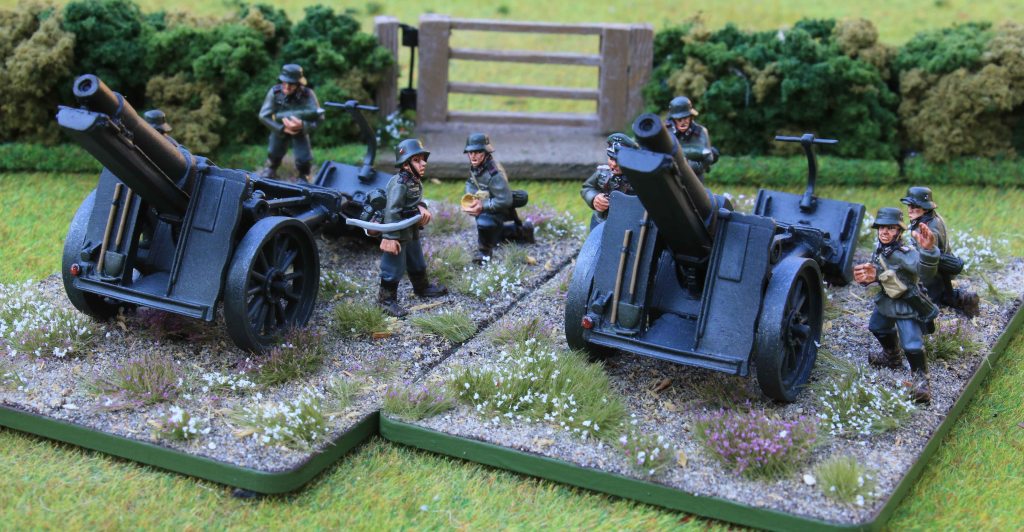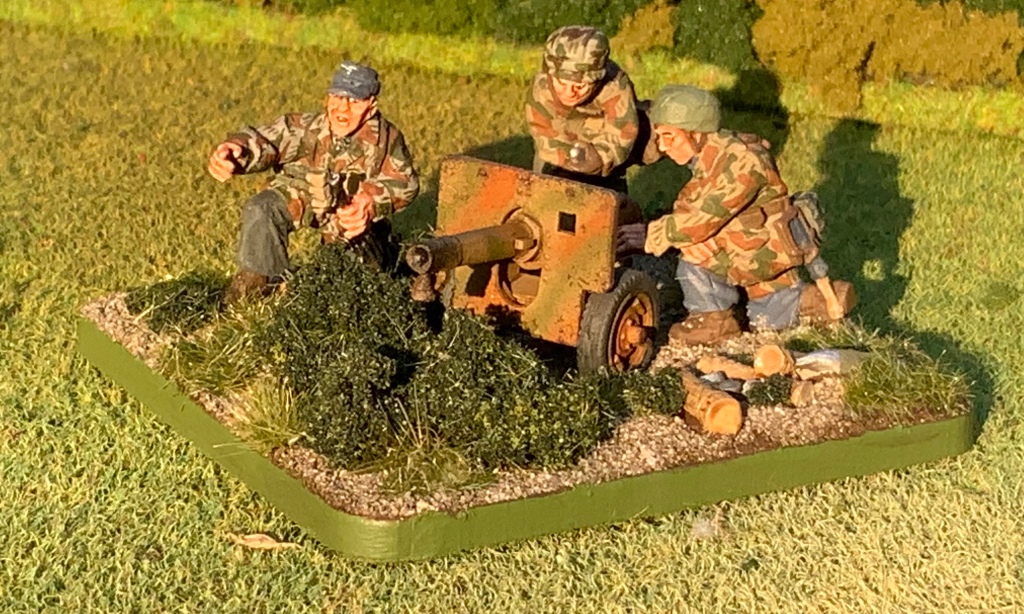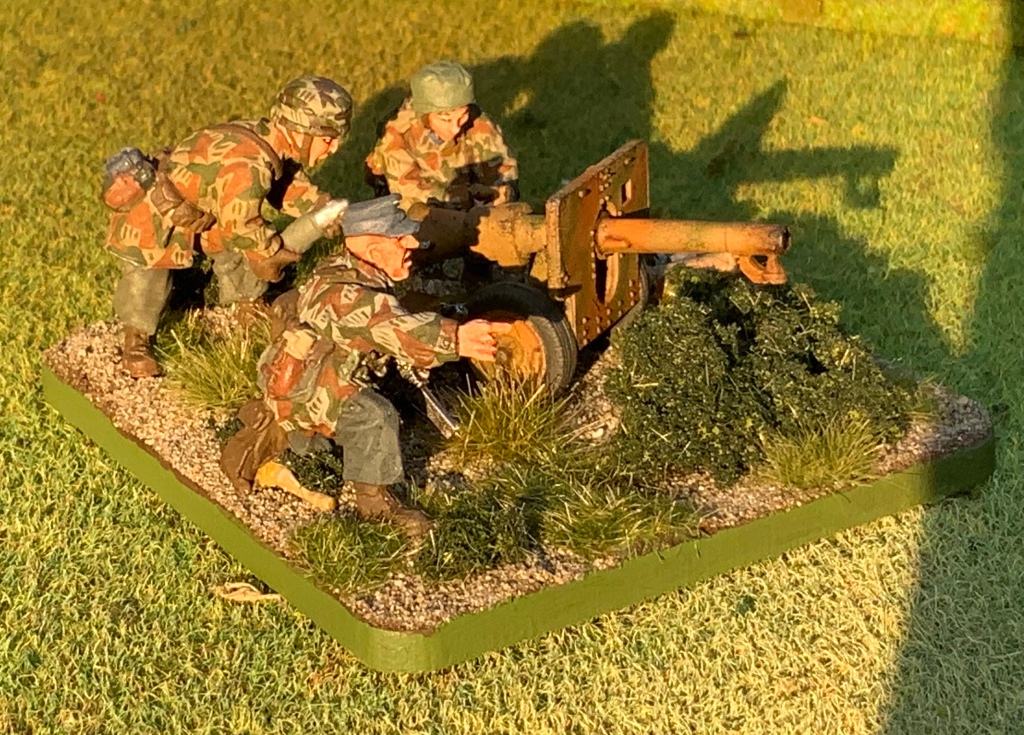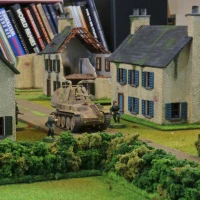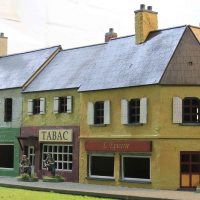
This post has been a long time coming. I actually started it early summer last year, but then decided to finish it after the last three models. So,let us dive into what I finished this spring.
First of all there were some loose ends to tie up. That is opened topped vehicles I did almost three years ago, but that were still missing their crews. Having used a lot of Tamika kits that came with a crew, it seemed sensible to use these. (Sorry, just a group shot here.)

The good thing is, that there were so many, I actually had some extras to fill some more vehicles. One of them is a Krupp Protze KfZ 70 Tamika) to pull some guns like the LeiG 18 or PaK 38 below. Technically the LeiG 18 would have been pulled by a KfZ 69 and the PaK38 by something heavier. But I felt this was a good compromise for an army already overflowing with vehicle models. This way I could use the if (or when) an extra transport was needed as well.
The LeiG 18 is actually a repaint of a model I did a couple of years ago. Back then I rather meant to use it mid war, which was represented by painting their uniforms this way and giving the grey a sun bleached look with a Dunkelgelb overspray. So I repainted them both to match my other early war stuff. One of the crew from the PaK 38 did not really match the gun IMHO so I gave that crewmember to the LeiG 18 and replaced the missing crewman on the PaK with a plastic one. Both of these guns are by Warlord Games, with the LeiG being an old now out of production version from their early days (or even the days before they bought the range from Paul Hicks).







The rest of the crew went to a SdKfz 251/3 and 251/18 (used as a regimental command vehicle) to give me more communications and command options. These are 3D printed models. I printed these out with my old FDM printer. Shame I did not print them out later. With my newer printer the lines would have been smaller.




Speaking for more command and communications options I also did a PzKw I command version (3D print), a SdKfz 263 and Opel Blitz communications van (both of the later are 1st Corps).





And while I was working on the SdKfz 263, I also did a SdKfz 232 to get a heavy armoured car. Both the model and commander are by Tamiya.


And to add some more armoured support for an infantry division I added three StuG III Ausführung B. These are Tamiya models as well. Stowage is scratchbuild using Tamiya parts and plastic are for the racks.







Now one of the last things missing was some armoured resupply vehicle. I opted for a SdKfz 252. Not the most common vehicle, but I always liked its shape over the SdKfz 250/6 it was replaced by. Again this is a 3D print and again I wish I had printed this later.

So far the only artillery I had was a pair of SiG 33. To round that off a little more and give me some more options I added a pair of leFH18 howitzers. Both the Warlord Games models.



At this point my early war force was virtually complete. About the only things still missing were a Panzerjäger I, a Bison and another tank option when Imneed to depict a Panzer Division not equipped PzKw 38(t) tanks. Since the first two did not really interest me, that only left me with some PzKw III tanks.
I opted for a PzKw III Ausführung F. Maybe not the most common version, but I really like the twin turret mounted co-ax machine-guns. The models are by 1st Corps, the commander is by Rubicon.



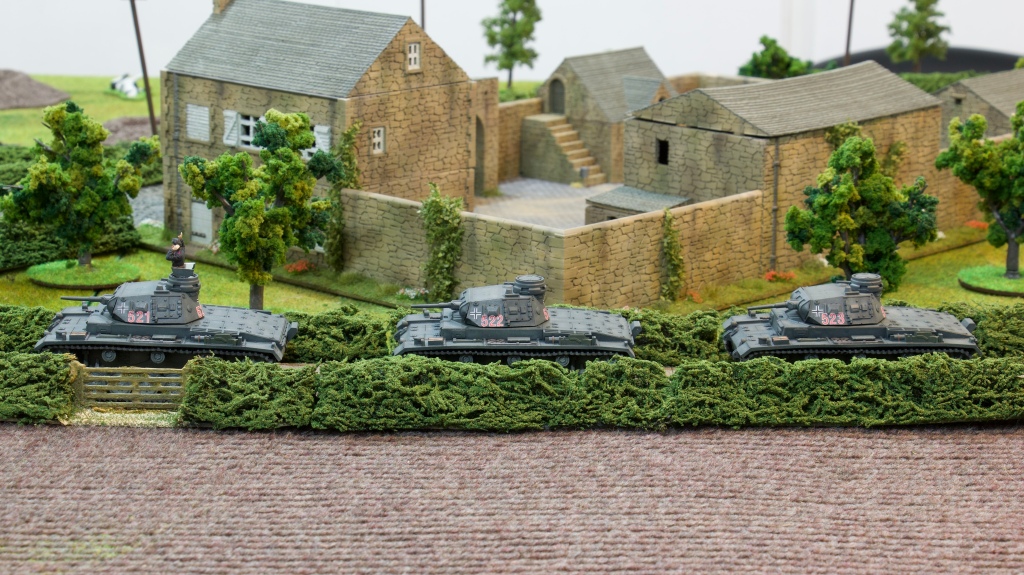

And this essentially brought me to the end of the line. A complete force which can depict virtually any German force from the Invasion of Poland to Operation Barbarossa. Infantry in strength for all operations either on foot or mounted on trucks or half tracks, as well as a Kradschützenplatoon. All tank options from PzKw I to IV. Artillery, AT-guns, reconnaissance, command, communications vehicles and planes. Putting them all on the table for a group shot made me realise how much it actually is.





And last here are the detail shots from the past few years (from their respective posts):
































